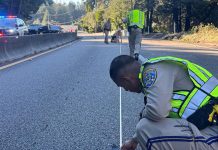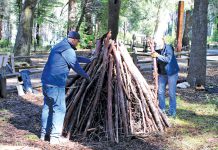In October of 2019, Pacific Gas & Electric introduced Californians to the Public Safety Power Shutoff, or PSPS. While these preemptive electrical shutdowns had been commonplace in more rural parts of the state, the heavily populated areas of California were unfamiliar with this term. Intended to mitigate the risk of fire caused by operating antiquated and potentially unsafe PG&E equipment during red-flag conditions (high temperatures, strong winds and low humidity), these power shutdowns are PG&E’s way of avoiding being responsible again for catastrophic fires. The instigation of the Northern California firestorm (October 2017) and the November 2018 Camp Fire were blamed on the utility’s equipment. Each fire resulted in colossal loss of life and damages. At the time, the Northern California firestorm was the costliest group of wildfires on record, resulting in 44 deaths and $14.5 billion in damages. The following year, the Camp Fire surpassed the 2017 fire event to become the most costly fire on record: 85 civilian deaths and $16.5 billion in damages.
While the genesis of the Camp Fire was a faulty PG&E electric transmission line, the utility fought the assignment of blame for the 2017 fires; after all, PG&E was still on probation for its role in the 2010 San Bruno pipeline explosion. That incident occurred after a 30-inch natural gas mainline exploded, resulting in the destruction of 38 homes, eight deaths and a $565 million settlement for victims. Ultimately, of the 12 fires that combined to create the 2017 Northern California firestorm, PG&E was found responsible for causing all but one of those fires.
October of 2019 brought red-flag conditions to the San Francisco Bay Area, resulting in PG&E’s institution of the PSPS. While areas in the North Bay experienced high winds and hot temperatures, the South Bay did not; however, the intricacy of PG&E’s transmission lines meant that even areas with 2-3 mph winds were at the mercy of the utility’s actions, resulting in 30 counties and over 3 million people losing power during the month.
Following that PSPS, the utility’s CEO stated that it had found over 100 cases of wind-related damage to nearly 25,000 miles of power lines in the state, and announced that by taking preemptive action, PG&E had averted potential fires within the grid.
Not surprisingly, California ratepayers were unnerved by the shutoffs, and demanded answers from executives: Why can’t the transmission lines be placed underground? Why are we still paying for a utility we can’t use? Why is our access to power impacted when there is no wind of which to speak in our locality?
In an attempt to insulate its shareholders from further losses, PG&E filed for Chapter 11 bankruptcy in January of 2019. The utility emerged from Chapter 11 on July 1, 2020—a little less than four months before this most recent round of PSPS. Once again, a red flag warning in the region caused another round of PSPS in Northern California beginning Sunday. Even though many residents in the San Lorenzo Valley could barely muster a wisp of wind on their property, thousands were cast into the dark. As of Tuesday evening, there were still residents without power.
In PG&E’s announcement regarding the implementation of power shutoffs, the utility indicated that this practice would be its default action for wildfire prevention for the next 10 years.
One of the main issues with these power outages is that they’re not just tied to electricity—as PG&E goes out, so does internet, cable and phone service. Folks in the San Lorenzo Valley are already living a fairly remote lifestyle—punctuate that with the loss of all communication with the outside world, and the potential for disaster looms large. Following this latest PSPS, SLV residents were encouraged to share their feedback on the event.
Aylosn Cworad: In the era of instant gratification, I understand it takes time to do a systems check. In a time of climate change, drought, high winds and very recently, fire weakened trees, I’d rather be safe and have the power shut off for a time than have my house burn down in a fire.
California is a huge state. Unfortunately, PG&E isn’t agile enough to deal with today’s demand for instant gratification on a local level. We could do better as a community with smaller power companies to manage our electricity. Unfortunately for now this seems to be impossible.
Lisa Rosato: I really appreciate all the workers who do their best (often in terrible conditions) to keep our grid limping along, but PG&E has to upgrade their antiquated systems and prioritize public safety over profits. Otherwise, we need to dismantle their monopoly. Losing power with this level of frequency and duration is simply unacceptable. It’s impossible to keep up with remote school and work, puts folks with electric medical devices at risk, and has cost us hundreds of dollars in spoiled food—multiple times!
Jeff Forehan: I teach at West Valley College in Saratoga. Covid has driven our courses online, so when the power and the internet goes out, I’m unable to conduct my classes. As a result, students are paying for an education they can’t get. Due to Covid, there isn’t even a coffee shop or restaurant where I can go to work. On another note, my wife and I have an adjustable bed, where you can raise your head or legs. We had the bed in the upright position when the power went off; we both ended up sleeping in the guest room.
Tabitha VanDine: I live in a trailer, and really rely on my electric blanket to stay warm at night. I’ve been an icicle for two days, it’s miserable. And without wifi I can’t call or text, and it stresses me and my family out that I am not able to communicate if something were to happen. Also, when the power goes out my water goes out, since the trailer uses electricity to pump it from a holding tank to the faucet/toilet. So no heat, no water, and no ability to communicate are pretty basic “luxuries” no one should have to worry about going without.
Readers: do you have suggestions for how to surmount the obstacles of a PSPS? Weigh-in: send your thoughts to ch*******@*********er.com.











